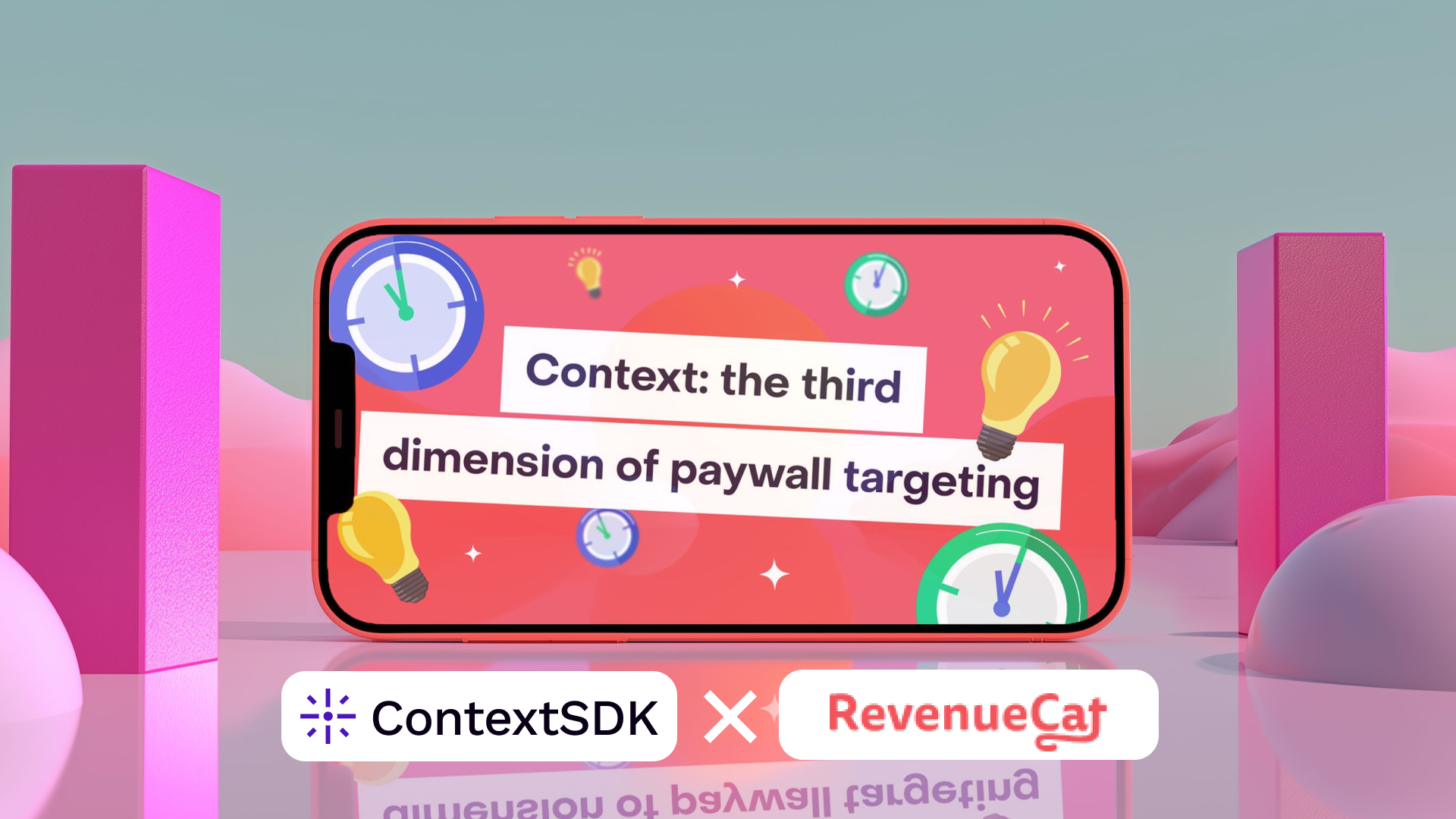Stop Relying on Event-Based Monetization: Add Context to Increase Conversions


Introduction
Most apps monetize on events - not moments.
After X swipes. After level Y. After a purchase. That’s necessary - but incomplete. Users don’t live in events, they live in moments. And if your offer lands in the wrong one, it fails - no matter how perfect the copy or price is.
It’s time to stop guessing and start timing.
Event-based: great, but blunt
Event-based monetization is the backbone of almost every app. You define key triggers - like level complete, out of coins, or matched with a user - and connect them to monetization opportunities.
Why it works
- Predictable: you know exactly when an opportunity happens.
- Easy to measure: clear trigger → clear conversion.
- Works across all users.
But it’s blunt.
Events don’t care how the user feels in that moment. They fire the same way when someone is focused, distracted, or about to leave. The event is the same - the moment isn’t.
Moment-based: the layer that makes events land
That’s where moment-based monetization changes the game.
It adds a real-world awareness layer - how receptive a user is right now.
We call this receptivity, and it comes in three levels:
- High: The user is relaxed, stationary, and engaged.
- Uncertain: The user is active but multitasking.
- Low: The user is distracted, rushing, or about to leave.
The same event can perform wildly differently depending on receptivity.
Show a bundle offer when the player just finished a level and is sitting down? Great.
Show it while they’re walking to the subway? Wasted impression.
The hybrid model: both layers together
The best approach isn’t to replace event-based triggers - it’s to enrich them.
Here’s the simple recipe:
- Keep your event map (where offers can appear).
- Add a moment gate to decide when to show, swap, delay, or skip.
- Add backfill entry points so you don’t lose total impression volume.

You’re not removing monetization chances - you’re optimizing when to use them.
Think of it like pacing: better timing, not fewer opportunities.
How ContextDecision makes this simple
ContextDecision adds the missing layer between what you want to show and when you should show it. It reads real-world signals on-device to detect high, uncertain, or low receptivity - then gates your event triggers accordingly. Instead of showing every eligible prompt, it decides whether to show, swap, delay, or skip based on the user’s current moment.
Proof it works
- Wizz: +81% conversion rate, +20% LTV
Wizz timed offers using real-world context. With just 20% of the prompts, they captured 80% of sales - boosting revenue and retention without hurting UX. - BlackBox: +50% revenue uplift, +12% conversions
BlackBox used ContextDecision to trigger upsells at peak engagement moments - growing revenue without disrupting the minimalist player experience.
If you already have strong event triggers, ContextDecision is the missing layer that makes them land at the right time, for the right user.
Practical examples
Here’s how moment-aware monetization looks in the wild:
- Dating app: A “SuperLike” paywall appears only when users are stationary and engaged. When they’re on the move, show a short teaser instead. Skip entirely if attention is low.
- Gaming app: After a level completion, show the full bundle when the user is relaxed. If the player’s in transit, offer a smaller “coin-only” pack. If rushing, delay until next calm session.
- Social app: After someone shares content, trigger the invite prompt only when they’re in a high-receptivity moment - otherwise, log the missed timing and re-queue.
Each of these examples keeps the user experience smooth while maximizing intent.
Implementation notes
- Moment signals stay on-device - ensuring a privacy-first setup.
- Add (don’t reduce) entry points. Keep your full event map and backfill with extra eligible spots so moment filters can choose the best timing instead of forcing a single trigger.
- Add fallback logging. If an offer fires during a bad moment (for testing or legacy reasons), log it. You’ll instantly see how much bad timing costs.
Closing thought
Events decide what could be shown. Moments decide when it should be shown.
Run both - and you’ll grow revenue while protecting user experience.
And always remember:
Events set the opportunity. Moments set the outcome. Run both.






